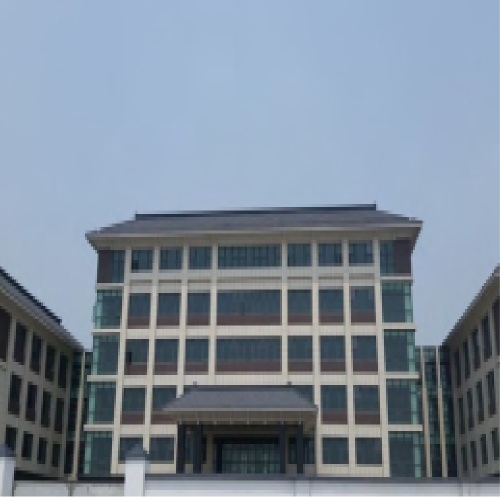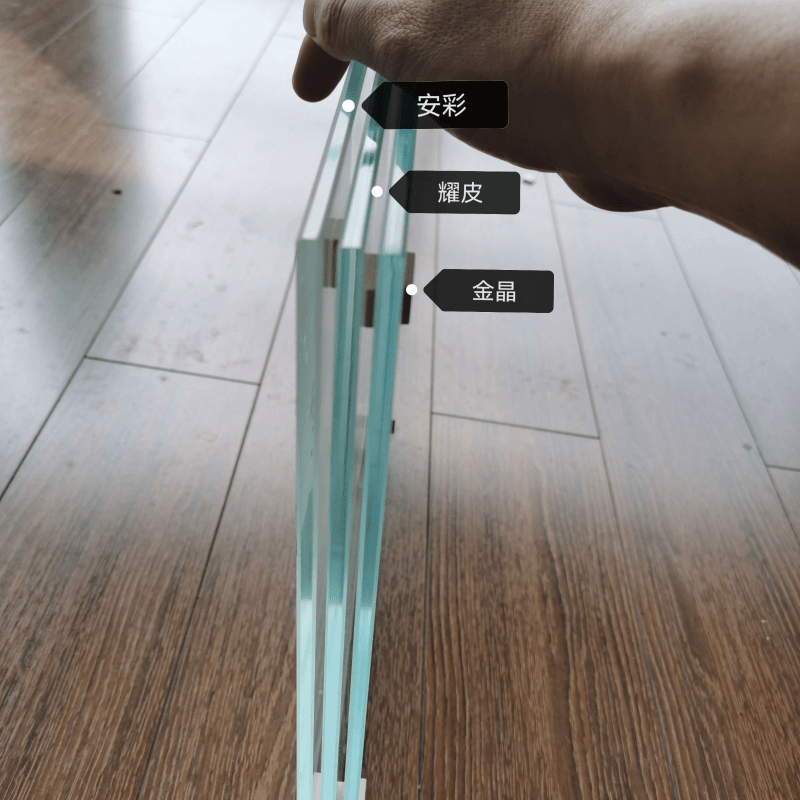Მეცნიერება გაუმჯობესებული სანათლების გაზაფხულის შემცირებისა და ფერების გამოსახულების გაუმჯობესების შესახებ
Სპეციალური საფარით დამუშავებული მინა გამოიყენებს დამახასიათებელ ტექნოლოგიას, რათა გააუმჯობინოს ნათურის სინათლის გატარება მის მეშვეობით, რითაც სივრცე უფრო ნათელი და განათებული ხდება. ზოგიერთი სპეციალური დამუშავება ნათელი სინათლის გატარებას დაახლოებით 15%-ით ამაღლებს, რაც ნიშნავს შიდა სივრცეების უკეთ განათებას ელექტრო ნათურების გამოყენების გარეშე. მიკროსკოპულ დონეზე ეს საფრები ამუშავებენ გარკვეული ტალღური სიგრძის ბლოკირებით, რომლებიც არ გვინდა, და იძლევიან სასურველის გატარებას პრობლემების გარეშე. ასეთი სახის განვითარება არქიტექტორებს უზრუნველყოფს იმით, რომ დიზაინის გაკეთებისას მაქსიმალურად გამოიყენონ დღის სინათლე მთელი დღის განმავლობაში. ეს არ მხოლოდ გარეგნულად ლამაზად გამოიყურება, არამედ ენერგიის დაზოგვასაც უწყობს ხელს საკომერციო შენობებში, სადაც განათება ელექტროენერგიის ხარჯების დიდ წილს შეადგენს.
Გამოსახავის შემცირება და ნახევარი ინარჩუნების მაქსიმიზაცია
Არსებობს სხვადასხვა სახის საფარი, რომელიც ამცირებს პირდაპირი მზის სინათლის გამო წარმოქმნილ არეკვლას, რაც მათ მნიშვნელოვანად აქცევს იმ ადგილებისთვის, სადაც ადამიანებს საჭიროებენ კარგ ხილვას, როგორიცაა საოფისე შენობები ან სკოლები. არქიტექტურის კვლევები აჩვენებს, რომ ასეთი ანტიარეკვლის ამოხსნები მნიშვნელოვნად განსხვავდება იმის მიხედვით, თუ როგორ გრძნობენ თავს შენობების მკვიდრები დღის განმავლობაში. ისინი სინამდვილეში ქმნიან გარემოს, სადაც შუქი გაწონასწორებულად გრძნობს თავს, პირდაპირ უარყოფითად და უხეშად უკმაყოფილოდ. საფრის მუშაობის მეთოდი სინამდვილეში ჭკვიანურია - ის არეკვლის სინათლის სპექტრის გარკვეულ ნაწილს, რომელიც პრობლემებს იწვევს არეკვლის შემთხვევაში, მაგრამ გამოშვებულია ბევრი ბუნებრივი სინათლე. უმეტესობა შენობების მენეჯერები აღმოაჩენს, რომ ეს მიდგომა საოცარ შედეგს იძლევა როგორც თანამშრომლების პროდუქტიულობის, ასევე სამუშაო პირობების მიმართ დამაკმაყოფილებელი პირობების მიხედვით.
Ფერის გამოსახვა ჩანაწერის მთავარი ნიშანი შიდა საცავებში
Იმის გარშე მნიშვნელოვანია ფერების სიზუსტე მსგავს ადგილებში, როგორიცაა სამხატვრო გამოფენები და მაღაზიები, რადგან ადამიანებს სჭირდებათ პროდუქტების ნამდვილი სახით ნახვა. სპეციალური საფარით დამზადებული მინა შეინარჩუნებს ფერთა სიზუსტეს, რითაც ნივთები ნათელი და ნამდვილი გამოსახულებით ჩანს, რაც პირდაპირ მოქმედებს მყიდველთა აღქმაზე. ზოგიერთი ბაზრის კვლევა აჩვენებს, რომ მაღაზიებში ფერების უკეთ ასახვა გაყიდვების ზრდას უწყობს ხელს, ვინაიდან პროდუქტები საჩვენებლის სწორად მოწყობის შემთხვევაში უფრო მიმზაცებულად გამოიყურებიან. მინის ტექნოლოგიებში ასეთი გაუმჯობესებები კიდევ უფრო მკაფიოდ ასახავს ვიზუალური ხილულების და ფერების სწორად ასახვის მნიშვნელობას იმ ბიზნესებისთვის, რომლებიც სურს ყურადღების მიპყრობა და მყიდველების ხელახლა მობრუნება.
Სასურველი სინათლეს გამოსახავად გამოყენებული დაფიქსირების ტიპები
Low-E დაფიქსირებები: სინათლის და თერმალური კონტროლის ბალანსი
Დაბალი გამოყოფის ან დაბალი E საფარი მნიშვნელოვან როლს ასრულებს იმ სივრცეებში საჭირო სინათლის მიღწევაში გადახურების გარეშე. ისინი მოქმედებენ საკმარისად გონივრულად, ისინი სითბოს უკან აბრუნებენ საიდანაც მოდის, რაც ნიშნავს, რომ შენობები არ უნდა ისურვონ ტემპერატურის შესანარჩუნებლად. ზოგიერთი ბოლო კვლევა აჩვენებს, რომ შენობების დაბალ E მიმართულებით გადართვისას ყოველთვიური ენერგო ხარჯები დაახლოებით 30 პროცენტით შეიძლება შემცირდეს. როგორ ახერხებენ ამას? საკმარისად მარტივია, მიკროსკოპული ფენები სპეციალური ლითონის ოქსიდების პირდაპირ მიმაგრებულია მინაზე წარმოების დროს. ეს მცირე საფარი ხელს უშლის ზედმეტი სითბოს დაკარგვას, მაგრამ იმდენად მარტივად ტოვებს სინათლის გატარებას. ნებისმიერი ადამიანისთვის, რომელიც ამართლებს ინტერიერის კომფორტული ტემპერატურის შენარჩუნებას წელიწადის განმავლობაში და ერთდროულად ფულის დაზოგვას, დაბალი E ტექნოლოგია საიმედო ამონახსნს სთავაზობს, რომელიც ეფექტურად მუშაობს სხვადასხვა კლიმატში და შენობების ტიპებში.
Solar-F Cool Technology for Visible Light Optimization
Solar-F Cool Tech მუშაობს იმ პრინციპით, რომ იძლევა საშუალებას ხილული სინათლის გადატარებას, მაგრამ ახერხებს მზის სითბოს დიდი ნაწილის გამორიცხვას. რა მთავარ პრობლემას ხსნის ეს ტექნოლოგია? ადგილების განათებას დღის განმავლობაში, მაგრამ იმ ადგილების ორთქლის სახით გახურების არ გახდომას. გამოცდებმა აჩვენა, რომ შენობები, რომლებშიც გამოყენებულია Solar-F Cool მინა, შეძლებენ შიდა ტემპერატურის 5 ფარენჰეიტით შემცირებას სტანდარტული ფანჯრების შედარებით. ეს კი ახდენს გასაშვები სისხურის ხარჯების შემცირებას და დროთა განმავლობაში ამცირებს კონდიციონერებზე დატვირთვას. ადგილებისთვის, სადაც ზაფხულში მზის სხივები ძლიერად ეცემა, როგორიცაა ფინიქსი ან დუბაი, ასეთი ფანჯრების გამოყენება ნიშნავს იმას, რომ ადამიანებს არ სჭირდებათ კონდიციონერის მუდმივად ჩართვა. არქიტექტორები ამ ტექნოლოგიას უყვართ, რადგან ის კარგად ერგება მწვანე შენობების გეგმას, არ არღვევს ბუნებრივი განათების პრინციპებს, რომელიც ყველასთვის ცნობილია იმაზე უკეთესი, ვიდრე ფლუორესცენტული ნათურებიანი განათება.
Კერამიკა წინააღმდეგ თეთრ სურათის დაფარვების შედარება
Კერამიკული და სითხის მინის საფარის შედარება აჩვენებს, რომ თითოეულს აქვს თავისი ძლიერი მხარეები, დამოკიდებული სამუშაოს მნიშვნელობაზე. კერამიკული საფარი ხანგრძლივია და უფრო მეტად ატანს ხაზებს, მიუხედავად იმისა, რომ ის ამცირებს გამავალი სინათლის რაოდენობას სითხის მინის საფართან შედარებით. ტესტებმა აჩვენა, რომ კერამიკული საფარი კარგად გაძლევს აგრესიულ ამინდის პირობებს, რამაც მან ხშირად აირჩიეს იმ ადგილებისთვის, რომლებიც დროთა განმავლობაში სახის უხეშ გარე გარემოს უხდებიან. სითხის მინა კი ბუნებრივ სინათლეს უფრო მეტ სინათლეს უშვებს და უფრო ნათელს უჩვენებს, ამიტომ კარგად მუშაობს მაშინ, როდესაც კარგი ხილულობა მნიშვნელოვანია, როგორიც არის საოფისე ან სახლის ფანჯრები. ერთის არჩევა მეორეზე დამოკიდებულია იმაზე, რომ რამდენად მნიშვნელოვანია სიგრძე სივრცეში მაქსიმალური სინათლის მიღების მიმართ.
Გამოყენება რეზიდენტურ და კომერციულ დიზაინში
Დროშის საფარები და დიდი საზღვაო საყავები
Ბოჭკოვანი სახლების შემკული საშუალებები გარკვეულწილად ცვლის შენობების გარეგნობას, შიდა და გარე სივრცეების შერწყმას უზრუნველყოფს. არქიტექტორები სასიყვარულოდ მუშაობენ მასალებზე, რომლებიც საშუალებას აძლევენ გახსნილი, გამჭვირვალე სივრცეების შექმნას, სადაც ნათელი სხივები ყველა მიმართულებიდან შედის. ბოლო დროს ასეთი ტენდენცია სიმყარს იძენს, რადგან მომხმარებლები სახლებში და საოფისეო შენობებში უფრო მეტ ნათელს მოითხოვენ, ამასთან ენერგიის შენახვასაც უპირატესობას აძლევენ. რამდენიმე კვლევის მიხედვით, რომლებიც სხვადასხვა ქალაქების საცხოვრებელ ბაზრებს აკვირდებიან, შენობების მნიშვნელობა იზრდება, როდესაც ისინი მეტი მინის გამოყენებით არის აშენებული. მინა თანამედროვე დიზაინისთვის სტანდარტულ მასალად გადაიქცა, ვინაიდან ბევრ შემთხვევაში უკეთ მუშაობს ვიდრე ტრადიციული ალტერნატივები.
RV ფენერები და მობილური ცხოვრების ამოხსნები
Საცხოვრებელი მანქანების ფანჯრები, რომლებიც დამზადებულია სპეციალური საფარის მქონე მინისგან, მნიშვნელოვან როლს თამაშობს, რადგან ისინი დახმარება იზოლაციაში, რითაც მანქანის მასა ინარჩუნებს საწვავის ეფექტური მოხმარების შესაძლებლობას. მისი მოხმარების გამო მანქანის შიდა სივრცე უფრო მსუბუქი ხდება, რაც საწვავის დაზოგვას უზრუნველყოფს. ამ დღეებში მობილური ცხოვრების მიმართ დამოკიდებულების გაზრდის გამო, მაღალი ხარისხის მასალების მოძიება, რომლებიც უზრუნველყოფს მანქანის შიგნით ადამიანების უსაფრთხოებას და კომფორტს, მნიშვნელოვან საკითხად გადაიქცა. საცხოვრებელი მანქანების ფანჯრებზე ახალი საფრის დამაგრება მხოლოდ სინათლის გაუმჯობესებას და დამატებით დაცვას უზრუნველყოფს საფრთხის შემთხვევაში, არამედ გზაზე ცხოვრების პირობებს უფრო სასიამოვნოს ხდის. ბოლო გამოკითხვების შედეგების გათვალისწინებით, რომლებიც დაკავშირებულია გარეთ ცხოვრების სურვილთან, დასაკმაყოფილებელი შეფასებების რაოდენობა გაიზარდა მამატებით ამ გაუმჯობესებების გამოყენების შედეგად. ეს მაჩვენებელია, რომ საცხოვრებელი მანქანების ფანჯრების ტექნოლოგიები გვიან ან ადრე განვითარდება ჩვენი სიყვარულის საწინააღმდეგ ღია გზების მიმართ.
Საზღვაო ფენერები და შიგა განყოფილების ინოვაციები
Როდესაც მას ამ სახის მინა ხსნილ სახურავებში ამონტაჟებენ, ის ბუნებრივ ნათელს უფრო მეტ რაოდენობაში შეჰყავს შენობებში, რაც შესაბამისად ამცირებს დღის განმავლობაში ელექტრო ნათურების გამოყენების საჭიროებას და ეხმარება ენერგიის დაზოგვაში. კვლევები აჩვენებს, რომ იმ ოფისებში სადაც კარგად არის და დანათებული დღის ნათელი, მუშაობენ უფრო ბედნიერი თანამშრომლები, რომლებიც საქმეებს უფრო სწრაფად ასრულებენ, რაც გასაგებია ადამიანების რეაქციის სინათლეზე გათვალისწინებით. ასევე შიდა კედლები რომლებიც ამ სპეციალური მინით არის დამზადებული საოცარ შედეგს იძლევა. ისინი იძლევიან იმ ღია და გაშლილ შეგრძნებას რომელსაც ყველა ეძებს დღევანდელ დროს, მაგრამ ამავდროულად შენობის კერძო სივრცეებს ინარჩუნებს ცალკე. არქიტექტორებს უყვართ მუშაობა ამ მინასთან ერთად, რადგან ის საშუალებას აძლევს შექმნან ლამაზი დიზაინი დაუთმობით ფუნქციონალურობისა. სახლებიდან დაწყებული და საოფისე შენობებამდე, ეს ტექნოლოგია აერთიანებს პრაქტიკულ სარგებელს და კრეატიულ შესაძლებლობებს რომლებსაც ტრადიციული მასალები ვერ უტაცებენ კონკურენციას.
SYP Solar-F Cool Glass: Daylight Enhancement Solution
High-Temperature CVD Coating Durability
SYP Solar-F გამძლე მინა არის დამუშავებული CVD (ქიმიური აორთქლების დალექვის) საფარით, რომელიც განსაკუთრებით მდგრადია სიცივისა და სითბოს ექსტრემალურ პირობებში. ამ საფრის განსაკუთრებულობა იმაში მდგომს, რომ ის მწარმოებლის მოლეკულურ დონეზე წარმოიქმნება, რაც უზრუნველყოფს მაღალ მდგრადობას ულტრაიისფერი გამოსხივებისა და სითბოს წინააღმდეგ. სამეცნიერო გამოკვლევების მიხედვით, ასეთი საფარის გამოყენებით მინის სიცოცხლე იზრდება სადაც იგი გამოიყენება და იგი შეიძლება გაიზარდოს სტანდარტული მინის სიცოცხლის 2-3 ჯერ. მომსახურების გუნდები აღნიშნავენ შეკეთებისა და შეცვლის საჭიროების მნიშვნელოვან შემცირებას, რაც საშენი ნაგებობების სიცოცხლის განმავლობაში ხარჯების დიდ დაზოგვას უზრუნველყოფს. არქიტექტორებისთვის, რომლებიც მუშაობენ სანაპირო ზოლებზე ან უდაბნოებში, სადაც მასალები არასასურველ გარემოს ამჟღავნებენ, ასეთი მინა არის სავალდებულო არჩევანი და არა უბრალოდ ერთ-ერთი მაჩვენებელი სპეციფიკაციაში.

Სუპერიორული ხიდის გამოსვლის სპეციფიკაციები
Ის, რაც სპეციალურად გამოირჩევა SYP Solar-F Cool მინას, არის იმ ხილული სინათლის რაოდენობა, რომელსაც იგი უფრო მეტად გადასცემს ჩვეულებრივი მინის შედარებით. აშენებული სივრცეების გარდაქმნა ხდება უბრალოდ ამ მასალაზე გადასვლით. რიცხვებიც ამას ადასტურებენ: კარგი ხილვადობა და მყარი თერმული თვისებები იმას ნიშნავს, რომ არქიტექტორები სიამოვნებით მუშაობენ მასთან ენერგოეფექტური სივრცეების დიზაინის დროს. დამოუკიდებელი ლაბორატორიების ტესტებიც ადასტურებს იმას, რასაც ჩვენ ვხედავთ საშენ მასალებში. ამ მინით დამზადებული შენობები დღის განმავლობაში საკმარის ბუნებრივ სინათლეს იძლევიან, მაგრამ შიგნით გრილი რჩებიან, რადგან ის არ შეჰყავს ზედმეტ სითბოს. ამიტომ ბევრი მწვანე შენობის პროექტის დაწყებისას ამ კონკრეტული ტიპის მინას ითხოვენ. საოფისე შენობებიდან დაწყებული სკოლებამდე, ის უფრო ხშირად გახდა არჩევანის მასალა იმ ადამიანებისთვის, ვისაც სტრუქტურებში კომფორტისა და ეფექტურობის მიღწევა სურს.
Ავტომობილებისა და არქიტექტურული პროექტების აპლიკაციები
SYP Solar-F ზე გამჭვირვალე სარკის ტექნოლოგია მუშაობს კარგად სხვადასხვა ადგილას, არა მარტო მანქანებში, არამედ ასევე შენობების დიზაინშიც. როდესაც მანქანებში ინსტალირდება, მძღოლები უკეთ ხედავენ, გარეშე არასასიამოვნო ბრწყინვისა და კაბინაში ზედმეტი სითბოს, რაც გზის უსაფრთხოებისთვის მნიშვნელოვანია. შენობებისთვის ეს სარკე ამცირებს საჰაერო კონდიციონერების საჭიროებას ცხელი ამინდის თვეებში, რაც ნიშნავს ელექტროენერგიის დაბალ გადასახადს სახლის მფლობელებისთვის. ამ მასალის განსაკუთრებულ რითმში მდგომარეობს იმაში, თუ როგორ უმარტივესად ის იტევს სხვადასხვა გარემოში, მაშინაც კი, როდესაც ის ახალი მანქანის მოდელის ნაწილია ან თანამედროვე საოფისე კომპლექსებშია ინტეგრირებული, სადაც კომფორტი ერთვის ეფექტურობას.
Ენერგიული ეფიქიენტობა და UV დაცვის სინერგია
Ინფრაწითელი რეფლექსია თერმალური კომფორტისთვის
Ინფრაწითელი სინათლის ანარეკლი მინის დაფარვა დიდ ცვლილებას მოახდენს იმისთვის, რომ შენობაში მცხოვრებლები თავს კომფორტულად იგრძნონ. კვლევები აჩვენებს, რომ ინფრაწითელი ანარეკლავი საფარი ფანჯრებზე ნაკლებად სჭირდება კონდიციონერს ცხელ დროს, რადგან საფარი თბილს არ აძლევს. ეს ნიშნავს ელექტროენერგიის ნაკლებ ანგარიშს და გაგრილების სისტემებზე ნაკლებ დატვირთვას. როდესაც არქიტექტორები ეკოლოგიურად სუფთა შენობებს ამზადებენ, ისინი ხშირად ამ ტიპის მინასაც იყენებენ, რადგან ის ერთდროულად კომფორტს და გარემოსდაცვითი მიზნებსაც ემსახურება. მინის საშუალებით, რომელიც ინფრაწითელ გამოსხივებას ბლოკავს და ხილულ სინათლესაც უშვებს, სივრცეები იქმნება, სადაც ტემპერატურა სტაბილურია, დამატებითი ენერგიის ხარჯების გარეშე. ეს გახდება ჭკვიანი არჩევანი ოფისებისთვის, სკოლ
Ულტრავიოლეტის რადიაციის ბლოკირების შესაძლებლობა
Ხარისხიანი საფარის მქონე აზირი კარგად ასრულებს ამ ზიანის მომტანი ულტრიანის სხივების გავლის შეჩერების საქმეს, რაც დახმარებას ახლებს შიდა სივრცეებში ნივთების ახალგამოყენებულის მსგავსად შენარჩუნებაში და აიძულებს მათ დროთა განმავლობაში გაუმჯობესდნენ. კვლევები აჩვენებს, რომ ასეთი სპეციალური საფრები ამოიღებს დაახლოებით 99%-ს იმ ცუდი ნივთიერებებისგან, რომლებიც ჩვენ არ გვინდა შიგნით შესვლა, ასე რომ ჩვენი მატლები უფრო გრძელი ვადით რჩება ფერადი, ნახატები არ გაფერულდება და სხვადასხვა საგნები შიდა სივრცეში კარგ მდგომარეობაში რჩება. ეს მნიშვნელოვანია იმ ადგილებში, სადაც მზიანი წელის განმავლობაში მკაცრად ანათებს, ან ადგილებში, როგორიცაა ხელოვნების მუზეუმები, სადაც უნდა დაიცვას ფასდაუმატებელი ნამუშევრები მზის სხივებისგან. როდესაც მასალები არ გაფერულდება ან არ იწყებს განადგურებას ულტრიაის დაზიანების გამო, სივრცეები უფრო კარგად გამოიყურება და არავინ უნდა ხარჯავდეს მეტ ფულს სიხშირით სარემონტო სამუშაოებზე ან ნივთების შეცვლაზე.
Გრძელი მუშაობა განსხვავებულ კლიმატებში
Სპეციალური საფარით დამუშავებული სამშენ მასალები გამძლეა ამინდის ყველა სახის ცვლილებების მიმართ და ინარჩუნებს თავის მახასიათებლებს. სამყაროში ჩატარებული გამოცდები აჩვენებს, რომ ეს საფარი წელზე წელის განმავლობაში ინარჩუნებს თავის მოქმედებას, რაც ნიშნავს, რომ შენობები ენერგოეფექტური რჩება, უმნიშვნელოა გარემოში როგორი ამინდია — ყინვა თუ სიცხე. უმეტესობა ინდუსტრიის ექსპერტების აზრით, საფარის სწორი ტიპის არჩევა მნიშვნელოვანია მისი ხანგრძლივობისა და გარე ზემოქმედების მიმართ მდგრადობის განსაზღვრაში. როდესაც არქიტექტორები აგებულებს პროექტავენ იმ ადგილებში, სადაც ტემპერატურა ხშირად იცვლება ექსტრემალურად, სწორი სამშენ მასალის არჩევა უკვე არ არის მხოლოდ ესთეტიკური საკითხი, ის ფუნქციონალურად იცავს მთელ სტრუქტურას ზიანისაგან და უზრუნველყოფს ენერგოხარჯების კონტროლს ათეულობით წელზე.
